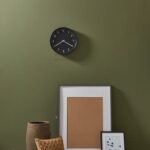Are you wondering how to decorate vintage in a Victorian home? The charm of Victorian homes and the timeless appeal of vintage decor make for a perfect pairing. From understanding the Victorian era and its design principles to selecting the right vintage pieces and incorporating ornate details, there are plenty of ways to achieve a vintage-inspired look within a Victorian space.
Victorian architecture and interior design are known for their opulence, intricacy, and attention to detail. Understanding the history and design principles of this era is essential in ensuring that your vintage decor complements the unique features of a Victorian home. From color palettes and patterns to incorporating vintage textiles and embracing ornate details, there is much to explore when it comes to creating an authentic vintage-inspired space in a Victorian home.
In this article, we will delve into tips for selecting and sourcing authentic vintage furniture, lighting, and decor specifically suited for a Victorian home. We will also explore traditional color schemes, intricate patterns commonly found in Victorian interiors, as well as ideas for using vintage fabrics, lace, and tapestries to add a touch of old-world elegance.
Whether you’re looking to blend modern conveniences with vintage charm or simply seeking styling tips for adding the finishing touches, this comprehensive guide has got you covered.
Understanding the Victorian Era
Victorian architecture and interior design are known for their ornate detailing, grandeur, and timeless charm. To successfully decorate a Victorian home with vintage pieces, it’s essential to understand the history and design principles of the Victorian era. The Victorian period, which spanned from 1837 to 1901, was marked by industrialization, technological advancement, and a fascination with ornamentation.
Victorian architecture often features asymmetrical facades, steeply pitched roofs, decorative trim, and elaborate detailing. Interiors are characterized by high ceilings, intricate moldings, stained glass windows, and rich woodwork. When decorating a Victorian home with vintage items, it’s important to keep these architectural elements in mind to maintain the integrity of the space.
Furthermore, understanding the design principles of the Victorian era is essential for creating an authentic vintage look in a Victorian home. The Victorians were fond of layering textures and patterns, incorporating dark and rich color palettes, and showcasing a variety of decorative objects. By studying these principles, homeowners can effectively integrate vintage decor into their Victorian homes in a way that honors the historical context while adding personal style.
| Victorian Architecture | Victorian Interior Design |
|---|---|
| ornate detailing | high ceilings |
| Symmetrical facades | Intricate molding |
Choosing the Right Vintage Pieces
When decorating a Victorian home with vintage pieces, it is essential to choose items that complement the grandeur and elegance of the era. Selecting and sourcing authentic vintage furniture, lighting, and decor requires a keen eye for quality craftsmanship and an understanding of the design aesthetics of the Victorian period.
Researching Styles and Periods
Before diving into collecting vintage pieces for your Victorian home, take the time to research different styles and periods within the Victorian era. This will help you identify authentic pieces and understand how they can be incorporated into your home’s decor. Look for furniture styles such as Rococo Revival, Eastlake, and Gothic Revival, as well as decorative elements like stained glass windows, intricately carved woodwork, and ornate metalwork.
Seeking Authentic Sources
When sourcing vintage items for your Victorian home, consider visiting antique shops, estate sales, flea markets, and online marketplaces specializing in antiques. These sources often carry authentic pieces that capture the essence of the Victorian era. Keep an eye out for genuine Victorian furniture made from solid woods like mahogany, walnut, or rosewood, as well as elaborate lighting fixtures adorned with crystal or brass detailing.
Refurbishing and Restoring
It’s common to come across vintage pieces that may require some refurbishing or restoration. If you encounter a beautiful yet worn-out antique piece that speaks to you, don’t hesitate to invest in restoring it to its former glory. Whether it’s reupholstering a settee with luxurious fabric or refinishing a decorative mirror frame with gold leaf, restoring vintage items can breathe new life into them while preserving their historical significance.
By carefully selecting and sourcing authentic vintage furniture, lighting, and decor for your Victorian home, you can enhance its timeless charm and create a space that pays homage to the grandeur of the Victorian era.
Color Palette and Patterns
When it comes to decorating a Victorian home with vintage charm, paying attention to the color palette and patterns is essential in capturing the essence of the era. Victorian interiors were known for their rich and bold colors, intricate patterns, and a mix of different textures. Here are some ideas for creating an authentic vintage vibe through color and pattern choices:
- Deep Jewel Tones: A common feature in Victorian interiors, deep jewel tones such as emerald green, ruby red, sapphire blue, and amethyst purple can be incorporated into the color scheme to add richness and opulence to the space.
- Rich Earthy Tones: In addition to jewel tones, rich earthy colors like deep browns, olive greens, and terracotta can also be used to create a warm and cozy ambiance.
- Intricate Patterns: Victorian interiors often featured elaborate patterns such as damask, floral prints, paisley, and intricate stripes. Consider incorporating these patterns into upholstery fabrics, draperies, wallpaper, and decorative accents to add visual interest to the space.
- Gilded Accents: Gold gilding was a popular decorative element in Victorian design. Adding touches of gold through accessories like picture frames, mirrors, or light fixtures can enhance the vintage appeal of the space.
To achieve an authentic vintage look in a Victorian home, it’s important to pay attention to not only the colors used but also the intricate patterns that were commonly found in interiors during that era. By incorporating these elements thoughtfully and creatively, you can create a charming vintage-inspired space with timeless appeal that pays homage to the grandeur of Victorian design.
Lastly,Hangings along walls with gold colored frames or heavy drapes create a luxurious feel while adding texture and warmth. This along with other modern ideas adds elegance while complementing realistic ways on how to decorate vintage in a victorian home.
Incorporating Vintage Textiles
Vintage fabrics, lace, and tapestries can add a touch of old-world elegance to a Victorian home, bringing a sense of history and sophistication to the space. When considering how to decorate vintage in a Victorian home using textiles, it’s essential to select pieces that reflect the opulence and intricacy of the Victorian era. From velvet drapes and embroidered linens to delicate lace doilies and ornate tapestries, there are numerous ways to incorporate vintage textiles into your decor.
One way to incorporate vintage textiles in a Victorian home is by using them for upholstery and window treatments. Look for richly patterned brocades, damasks, and chenilles in deep jewel tones or classic neutrals. These fabrics can be used for upholstering sofas, armchairs, and ottomans, as well as creating sumptuous curtains or drapes. Adding tassels, fringe, or other embellishments can further enhance the Victorian aesthetic.
In addition to upholstery and window treatments, vintage textiles can also be used for decorative accents throughout the home. Consider using antique lace tablecloths or runners on dining tables or sideboards, displaying embroidered handkerchiefs in shadow boxes as wall art, or hanging intricately woven tapestries as focal points in various rooms. By incorporating these vintage textiles into your decor, you can create a cohesive and elegant look that complements the timeless beauty of a Victorian home.
Finally, when selecting vintage textiles for a Victorian home, it’s important to consider their condition and care requirements. While some antique fabrics may be delicate or require special cleaning methods, they can add an unparalleled level of charm and character to your home. With proper care and placement throughout your space, vintage textiles can help create an ambiance that celebrates the history and grandeur of the Victorian era.
| Victorian Decor Textiles | Value |
|---|---|
| Richly patterned brocades | Invaluable in adding opulence |
| Antique lace tablecloths | A great decorative accent for tables |
| Tapestries | Adds grandeur through intricate designs |
Embracing Ornate Details
Crown Molding: A Timeless Touch of Elegance
Crown molding is a hallmark feature of Victorian architecture and interior design. It adds a touch of grandeur to the space and creates a seamless transition between the walls and ceiling. When decorating a vintage Victorian home, consider incorporating or restoring crown molding to highlight the architectural beauty of the space. Opt for intricate designs and ornate details that are true to the era, adding an elegant touch to the overall decor.
Ceiling Medallions: Adding Character and Charm
Ceiling medallions are another distinctive feature of Victorian homes, often used to adorn light fixtures or ceiling fans. These decorative elements add character and charm to the room, serving as a focal point that captures the essence of vintage elegance. When decorating a Victorian home, explore different designs and sizes of ceiling medallions to find one that complements the overall aesthetic while enhancing the space with an old-world appeal.
Intricate Woodwork: Showcasing Artistry and Craftsmanship
The intricate woodwork found in Victorian homes is truly a work of art, showcasing exceptional craftsmanship and attention to detail. From elaborate trim work to custom-built cabinetry, these ornate wood features contribute to the overall visual impact of vintage decor in a Victorian home. Consider highlighting and preserving these architectural embellishments as part of your interior design plan, allowing them to shine as beautiful focal points throughout your vintage-inspired space.
Incorporating these ornate details into your vintage decor in a Victorian home is essential for capturing the timeless elegance and sophistication of the era. By embracing crown molding, ceiling medallions, and intricate woodwork, you can elevate the overall aesthetic while staying true to the historic charm of Victorian architecture.
Mixing Old and New
When decorating a Victorian home with vintage charm, it’s essential to find the balance between old and new elements. Here are some techniques for seamlessly blending modern conveniences with vintage charm in a Victorian home:
1. Embrace modern technology: Integrate modern appliances and gadgets into your Victorian home without compromising its vintage aesthetic. Consider hiding electronic devices behind vintage-inspired cabinets or using decorative screens to conceal them when not in use.
2. Select period-appropriate finishes: When updating elements of your home, opt for finishes that complement the Victorian style, such as antique brass faucets and hardware, which add a touch of historical elegance to modern bathrooms and kitchens.
3. Preserve architectural details: Maintain and restore original architectural features, such as stained glass windows, intricate woodwork, and decorative moldings. Highlighting these details can create a seamless transition between old and new within your Victorian home.
Incorporating modern conveniences without sacrificing vintage charm is all about finding the right balance between functionality and historical appeal. By carefully selecting vintage-inspired decor and thoughtfully integrating modern elements, you can create a space that honors the timeless beauty of a Victorian home while meeting the needs of contemporary living.
Final Touches
In conclusion, decorating a Victorian home with vintage elements can create a truly enchanting and timeless living space. By understanding the design principles of the Victorian era and carefully choosing the right vintage pieces, homeowners can evoke the elegance and charm of the past while creating a space that feels cozy and inviting. From selecting authentic vintage furniture to incorporating period-appropriate color palettes and patterns, there are numerous ways to infuse a Victorian home with vintage flair.
One of the key considerations when decorating a Victorian home with vintage elements is to pay attention to ornate details and architectural embellishments. These features are characteristic of Victorian architecture and can serve as focal points in the decor. Additionally, incorporating vintage textiles such as lace, tapestries, and intricate fabrics can add a touch of old-world elegance to the space.
It’s also important to find ways to blend modern conveniences with vintage charm in a Victorian home. This can be achieved through thoughtful styling and mixing old and new elements seamlessly.
By paying attention to these details and following the tips for adding final touches, homeowners can create a cohesive, welcoming space that celebrates both the timeless appeal of vintage decor and the unique beauty of Victorian architecture. In essence, knowing how to decorate vintage in a Victorian home involves capturing the essence of a bygone era while infusing it with modern comforts for an inviting living environment.
Frequently Asked Questions
How to Decorate an Old Victorian House?
Decorating an old Victorian house requires a balance of preserving its historic charm while adding modern touches for functionality. Consider incorporating ornate trim work, vintage furniture, and rich colors to enhance the period feel.
Can You Mix Victorian and Modern?
Yes, it is possible to mix Victorian and modern styles in home decor. The key is to find a balance between the two aesthetics by blending traditional Victorian elements like crown molding or antique furniture with modern touches like clean lines and minimalist accents.
What Makes a House Look Victorian?
Several features contribute to giving a house a Victorian look. These include ornate detailing such as intricate woodwork, stained glass windows, high ceilings, and decorative patterns. Additionally, using rich, deep colors in the interior can also enhance the Victorian aesthetic.

I’m thrilled to be your companion on this exciting journey through the world of home decor and design. With a passion for turning houses into homes and a keen eye for the finer details, I’m here to help you transform your living spaces into beautiful, functional, and meaningful havens.





